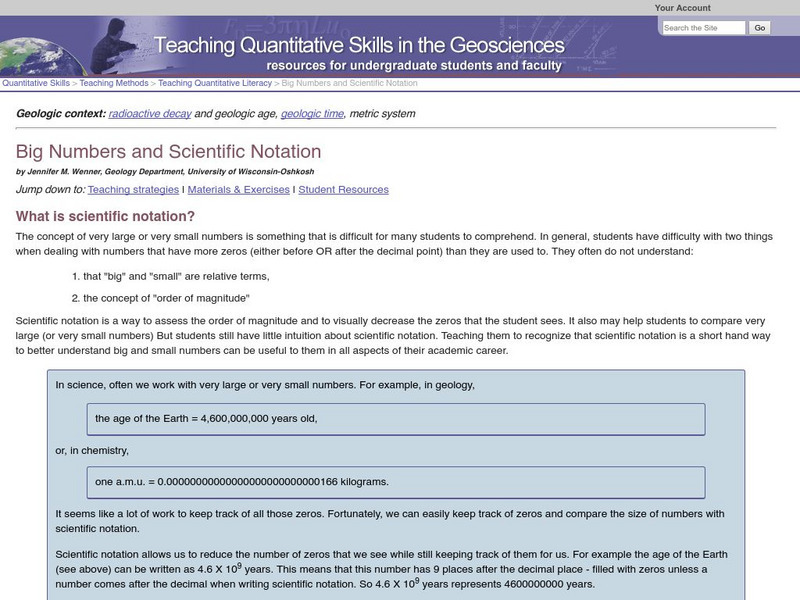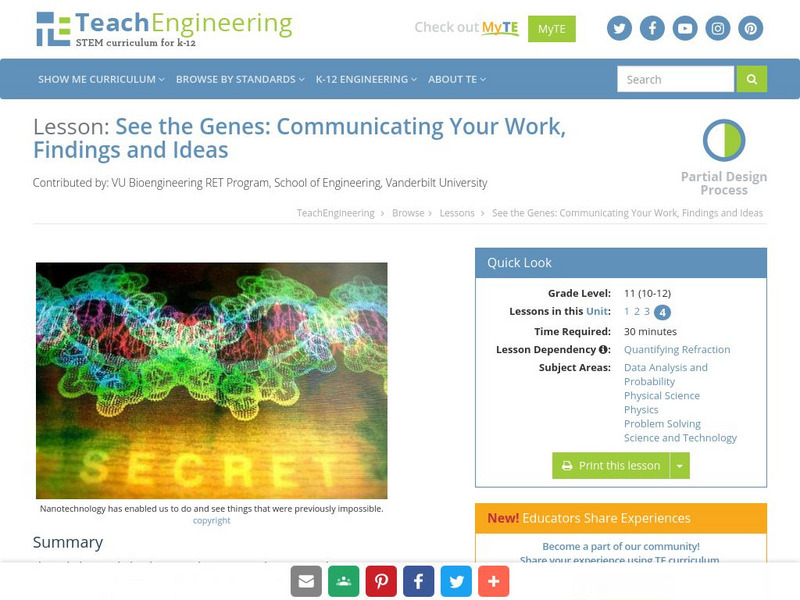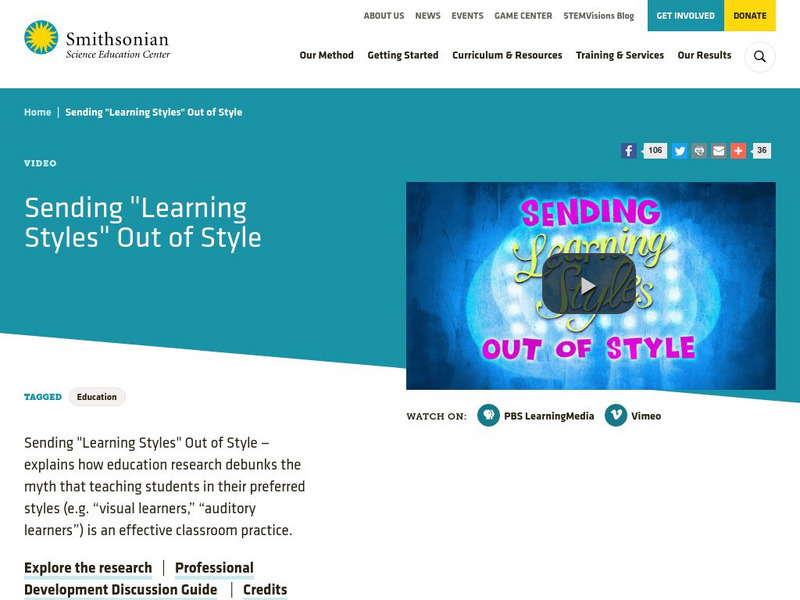Hi, what do you want to do?
Alabama Learning Exchange
Alex: Science Is a Wonderland
This is an inquiry lesson to teach students critical thinking skills. The student will learn through discovery what inquiry skills are and how they are used. They will learn how scientists use these skills in the scientific method to do...
Science Education Resource Center at Carleton College
Serc: Carleton College: Big Numbers and Scientific Notation
The lesson plan explores big numbers and scientific notation. The resource consists of class notes, examples, and additional links to teaching materials and student resources.
PBS
Pbs Teachers: Changing Your Mind: Understanding Braille
Explore the communications system based upon a pattern of raised dots called Braille, and design a method of inquiry that uses the scientific method to compare the effectiveness of reading dot cells against reading raised alphabet...
TeachEngineering
Teach Engineering: Where's the Water?
In this lesson, the students will conduct an investigation to purify water. Students will engineer a method for cleaning water, discover the most effective way to filter water, and practice conducting a scientific experiment.
TeachEngineering
Teach Engineering: A Lego Introduction to Graphing
Students use a LEGO ball shooter to demonstrate and analyze the motion of a projectile through use of a line graph. This activity involves using a method of data organization and trend observation with respect to dynamic experimentation...
TeachEngineering
Teach Engineering: Spectroscopy
Students learn how using a spectrograph helps us understand the composition of light sources. Using simple materials and holographic diffraction gratings (available online at a variety of sites, including Edmund Scientifics and the...
TeachEngineering
Teach Engineering: See the Genes
Through this concluding lesson and its associated activity, students experience one valuable and often overlooked skill of successful scientists and engineers- communicating work and ideas. Students create posters depicting their...
University of Texas at Austin
Euler's Method
This site contains a description and problems dealing with Euler's method. The site discusses why the Euler method is not used in scientific computations.
University of California
Q Files: Misconceptions About Science
Many students have misconceptions about what science is and how it works. This module explains and corrects some of the most common misconceptions that students are likely having trouble with.
TeachEngineering
Teach Engineering: Find It!
In this activity students will learn the basic concept of Global Positioning Systems (GPS) using triangulation and measurement on a small scale in the classroom. Students discover how GPS and navigation integrate mathematic and...
Other
National Geographic: Jason Learning
[Free Registration/Login Required] Educators and students will enjoy visiting the JASON Project, a NASA and National Geographic cooperation which works to provide accurate and intriguing scientific knowledge for students.
OpenStax
Open Stax: Entrepreneurship: Creativity, Innovation, and Invention: How They Differ
This resources teaches students how to distinguish between creativity, innovation, and invention, and to explain the difference between pioneering and incremental innovation, and which processes are best suited to each.
Smithsonian Institution
Smithsonian Science Education Center: Sending "Learning Styles" Out of Style
Studies have found that there is no benefit to matching teaching styles to individual learning styles. Mulitple representations of a topic are more helpful to a learner than just one regardless of preferred learning style. This is...
TeachEngineering
Teach Engineering: Is It Safe to Drink?
In this activity, the students will conduct an investigation to purify water. Students will engineer a method for cleaning water, discover the most effective way to filter water, and practice conducting a scientific experiment.

















